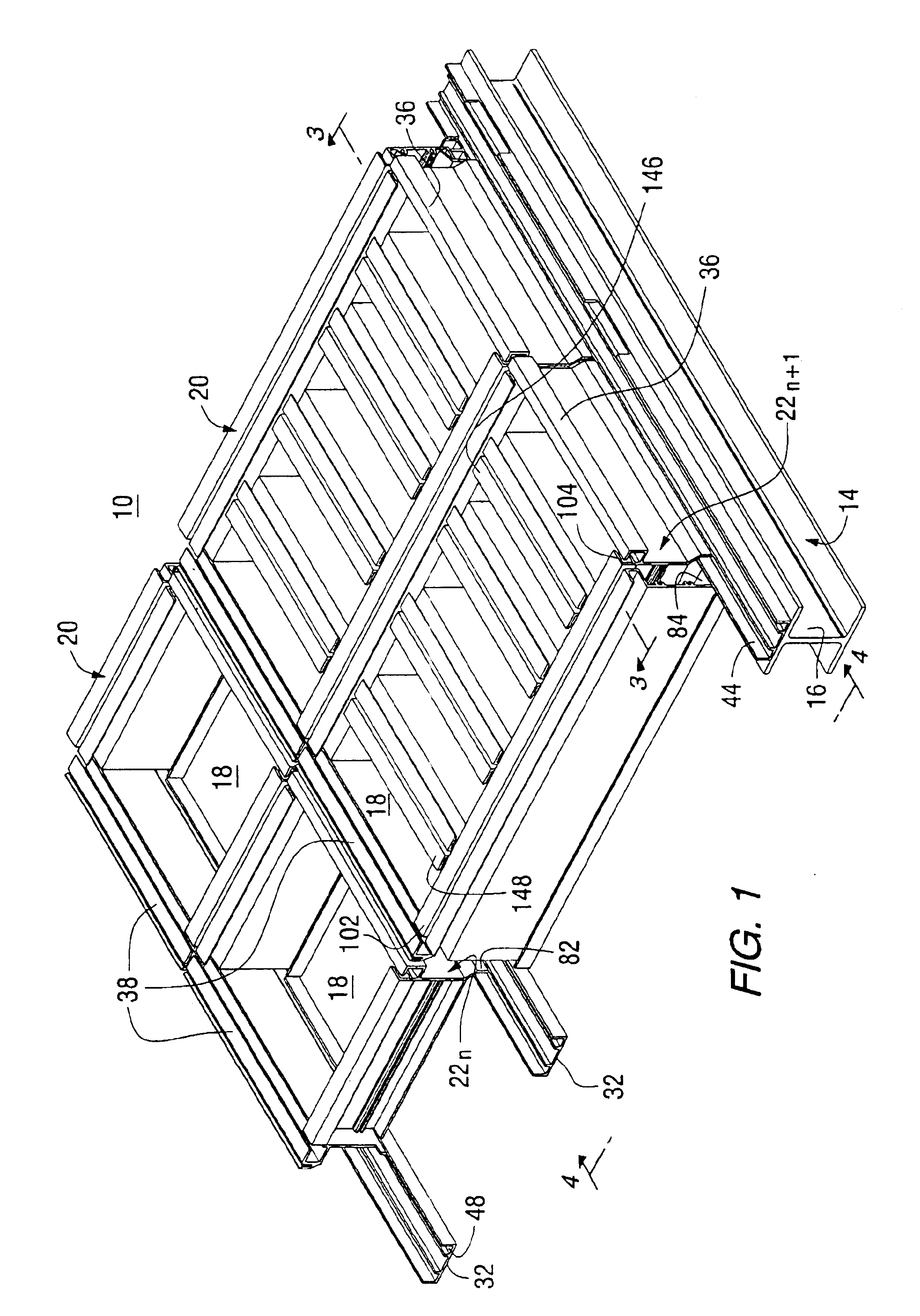Modular system for securing flat panels to a curved support structure
a technology of rigid panels and modules, applied in the direction of photovoltaic supports, heat collector mounting/supports, lighting and heating apparatus, etc., can solve the problems of brittle materials, inability to easily bend, and high manufacturing costs of components
- Summary
- Abstract
- Description
- Claims
- Application Information
AI Technical Summary
Problems solved by technology
Method used
Image
Examples
Embodiment Construction
A presently preferred embodiment of the presently disclosed invention is shown and described in connection with FIGS. 1-4 which show a modular system 10 for attaching planar panels such as photovoltaic panels 12, to a curved support structure 14. In particular, the example of FIGS. 1-4 relates to attaching flat panels, such as photovoltaic panels 12, to a domed or vaulted roof support structure 14. Typically, domed or vaulted roofs or canopies have a support structure that includes a multiple of rafters 16 that support a cover. The cover is formed from a multiple of panels 12 that are individually secured to the roof support structure by the modular system 10. The rafters 16 are curved according to the design of the particular roof to accomplish the intended structural and aesthetic purposes. The modular system 10 accommodates the curvature of the rafters and also secures the panels 12 to the rafters 16 as herein is more particularly described.
Each of the panels 12 is secured in a r...
PUM
 Login to View More
Login to View More Abstract
Description
Claims
Application Information
 Login to View More
Login to View More - R&D
- Intellectual Property
- Life Sciences
- Materials
- Tech Scout
- Unparalleled Data Quality
- Higher Quality Content
- 60% Fewer Hallucinations
Browse by: Latest US Patents, China's latest patents, Technical Efficacy Thesaurus, Application Domain, Technology Topic, Popular Technical Reports.
© 2025 PatSnap. All rights reserved.Legal|Privacy policy|Modern Slavery Act Transparency Statement|Sitemap|About US| Contact US: help@patsnap.com



